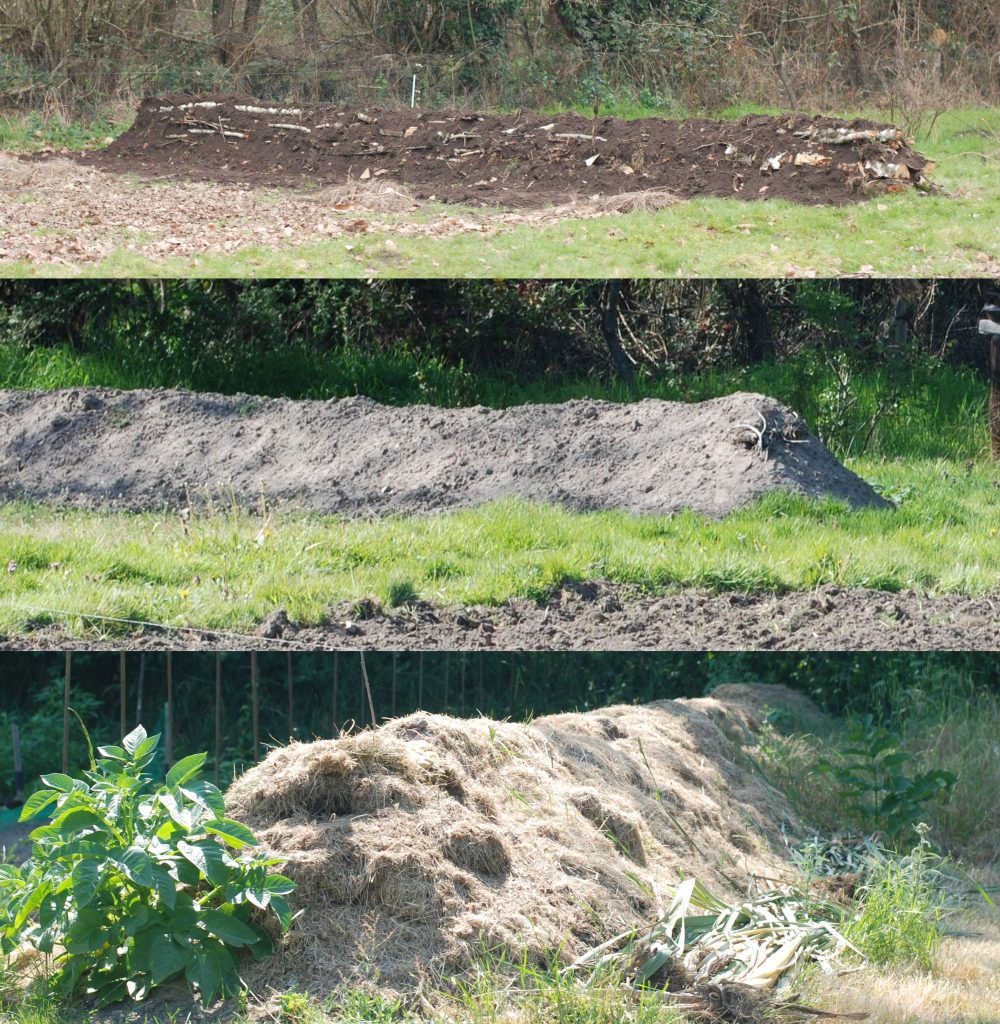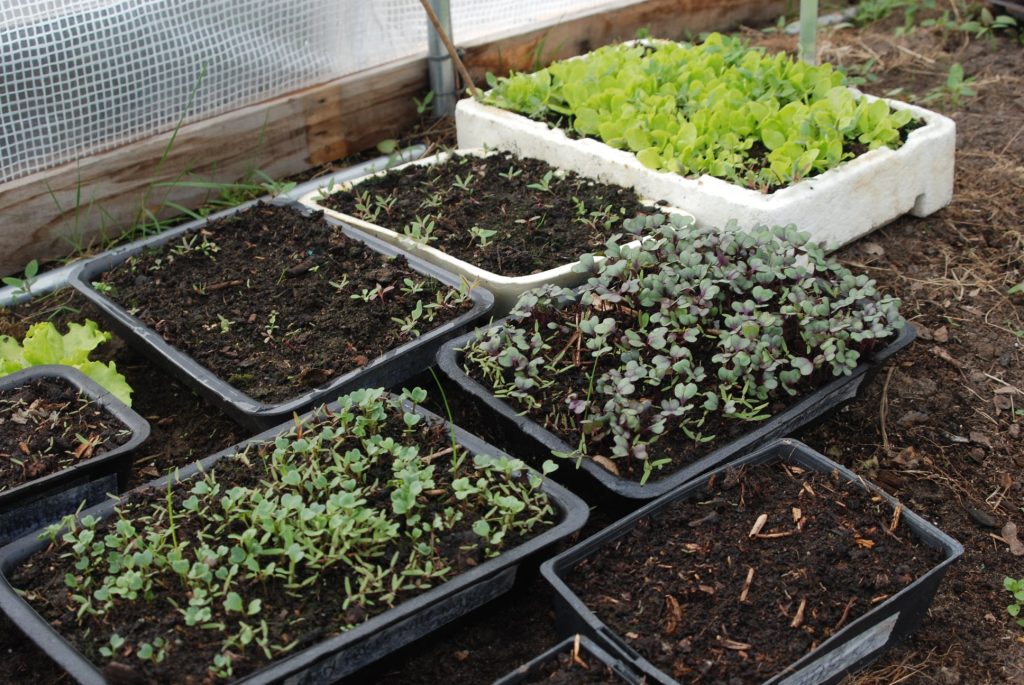
ENGLISH
About 7/8 months ago, I started making a self-fertilising mound also known as huglekultur.
I had all the ‘ingredients’ around me to build it: dead wood, branches, wood shavings and grass and leaf mulch.
I took my time building it.
Thanks to this construction, I was able to get some exercise outdoors all through the winter, whenever I could.
It’s finally finished.
But I’m not sure I’ll be using it this year.
Why not?
Well, it is very dry and the mound is brand new. I don’t think it’s had time to replenish its moisture content, bearing in mind that we’ve had a fairly dry winter and a dry-ish spring. What’s more, we are currently experiencing the flash drought which is happening in the Northern half of France.
At the same time, I’m not too advanced with my garden, so I can still decide to plant something in it…
On the other hand, a potato that I forgot to pick last year has grown at the base of the construction. I’ve never watered it and it’s looking much better than the others I planted in the garden from the end of March onward. I’ve had to water them while keeping my fingers crossed for rain soon.
Disappointed?
No.
Huglekultur is not a matter of speed, it’s a story that will evolve over time.
I have plenty of space in my garden to experiment with things that don’t have to come to fruition quickly.
One of the ideas for the world of after is to slow down.
This self-fertilising mound, before being a place that I’m going to use to produce food, is above all a desire to take life more slowly and even to accept that life has to move more slowly.
When I studied this type of cultivation, I took into account the fact that it can take three whole years before it’s really productive. This type of no-dig raised bed can then last for many years. By adding mulch regularly on top, it will continue to produce for a long time.
In short, “We have all the time in the world”.

FRANÇAIS
Il y a de cela 7/8 mois environ, j’ai commencé à fabriquer une butte autofertile aussi connue comme huglekultur.
J’avais tous les « ingrédients » tout autour de chez moi pour la construire ; du bois mort, des branchages, des copeaux de bois et du paillage d’herbe et de feuilles.
J’ai pris mon temps pour la faire.
Grâce à cette construction, j’ai fait un peu d’exercice tout l’hiver en extérieur, dés que je le pouvais.
Elle est finalement finie.
Mais je ne suis pas sûre de l’utiliser cette année.
Pourquoi ?
Et bien il fait très sec et la butte est toute neuve. Je ne pense pas qu’elle ait eu le temps de faire le plein d’humidité, sachant que nous avons eu un hiver plutôt sec, de même pour le printemps. En plus, nous subissons actuellement la sécheresse éclair, installée sur la partie nord de la France.
En même temps, je ne suis pas en avance avec mon jardin, donc je peux encore décider d’y planter quelques chose…
Par contre une patate que j’ai oublié de ramasser l’année dernière a poussé au pied de la construction. Je ne l’ai jamais arrosée et elle a l’air en bien meilleure forme que les autres que j’ai plantées dans le jardin dés le mois mars. J’ai d’ailleurs dû les arroser tout en croisant les doigts pour qu’il pleuve bientôt.
Déçue ?
Non.
La huglekultur, ce n’est pas une affaire de rapidité, c’est une histoire qui va évoluer dans le temps.
J’ai beaucoup d’espace dans mon jardin pour me permettre de faire des expériences qui n’ont pas besoin d’aboutir rapidement.
Une des idées du monde d’après, c’est de ralentir.
Cette butte, avant d’être un endroit que je vais utiliser pour produire de la nourriture, c’est avant tout une volonté de prendre la vie plus lentement et même d’accepter que la vie doit avancer plus lentement.
Quand j’ai étudié ce type de culture, j’ai pris en compte le fait que ça peut déjà prendre trois années entières avant d’être vraiment productif. Une butte autofertile peut en suite perdurer pendant de longues années. En rajoutant du paillage régulièrement, elle continuera à produire longtemps.
Bref, « We have all the time in the world »







